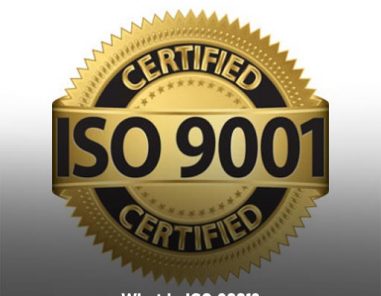
What is ISO 9001? Definition of Quality Management System
The ISO 9001 standard is the leading standard for quality management. The ISO...
Read MoreThe ISO 9001 standard provides companies with the criteria to improve the quality of the systems, operations, goods and services. The standard helps organisations to enhance the quality by streamlining and documenting all processes. Moreover, all responsibilities and procedures are rectified through the implementation of a Quality Management System (QMS). The standard itself focuses on several underlying quality management principles including an inherent focus on the customer, top management‘s commitment to quality, utilising a “process approach” to manage quality and striving for continual improvement.
Any organisation can acquire an ISO 9001 certification by achieving compliance in an external audit. Before hiring an auditor from a third party certification body, it may be beneficial to determine your organisation’s readiness level. The organisation’s readiness can be measured by conducting an internal audit which lays the foundation for a smooth process and can help maintain the integrity of the QMS before the external audit.
This article will outline the questions that an internal auditor would ask to assess an organisation’s compliance with ISO 9001 certification. The ISO 9001 audit checklist provided below will expand upon the requirements, clause by clause, that organisations need to adhere in order to achieve the compliance.
The ISO 9001: 2015 audit checklist contains several categories, namely:
The ISO 9001 audit checklist helps the auditor to gather required information about quality objectives, internal issues, corrective actions and customer satisfaction. Each clause of the ISO 9001: 2015 should be considered in an internal audit to gauge the compliance with the standard. ISO consulting will help you get ISO 9001 certification in the shortest possible time.
The auditor must begin by understanding the organisation and its context by determining the external and internal issues affecting the strategic direction of the QMS.
The auditor must determine which interested parties are relevant to the efficiency of the QMS, and if the organisation has determined the relevant requirements for those parties.
While understanding the context of the organisation, the auditor must determine the scope of the QMS by considering its boundaries, applicability, requirements of interested parties, products and services of the organisation.
The documentation of the scope and its maintenance should also be assessed under this clause. We suggest to read the article What is ISO 9001 for more information.
The internal auditor must assess the commitment of the top management towards the QMS. This can be assessed by analysing the accountability that the top management demonstrates towards the QMS. The accountability and commitment of the top management can be analysed through studying the established quality policies and objectives of the QMS.
The auditor will be able to assess the top management’s commitment to the QMS by studying the communication channels which are utilised to deliver quality policies across the organisation.
Additionally, the internal auditor must assess if the top management ensures that the responsibilities and relevant rules regarding the quality management are properly assimilated across the organisation. This can be done by assessing the findings of management reviews.
The internal auditor must assess the actions to address risks and opportunities taken by the organisation. It is necessary to identify how the organisation addresses the potential impact of the risk on the conformity of their products and services.
This might include avoiding the risk, eliminating the source, reducing the likelihood of the consequences, sharing the risk with other stakeholders or retaining the risk with the help of informed decisions.
Additionally, when talking about product design skills or service specifications, the auditor must assess how the quality objectives apply to all relevant functions.
The auditor must also study the monitoring methods, communication methods and evaluation methods that are used to update the product design skills. This can be done by studying the documented information on the quality objectives. You can get more information about this by reading the ISO 9001 requirements article.
The auditor analyses resources, people, infrastructure, environment, organisational knowledge and monitoring resources during this section of the audit. This is done by considering the capabilities and constraints on internal resources as well as identifying the service providers that interact with these resources.
The competency levels of the people regarding the statutory and regulatory requirements of the QMS are studied. Similarly, the internal auditor also determines the details of the infrastructure that are needed to achieve product and service conformity.
To understand the monitoring process, the auditor must study measurement instruments and determine their calibration status.
In this section, the auditor attempts to understand how the operational planning and control of the QMS is implemented. The auditor studies how an organisation defines the product or service requirements including statutory and regulatory requirements. When reviewing the requirements, it is necessary to consider product or service specifications including delivery variables, customer preferences, regulatory adjustments and cost modifications. The design and development considerations must focus on the different levels of control and potential consequences of failure.
In this section, the performance of the QMS is evaluated. This is done by considering customer satisfaction by studying customer’s perceptions. Additionally, the performance can be evaluated by studying information arising from internal audits and management reviews. Moreover, the decisions regarding continual improvement changes must also be considered.
In this section, the auditor studies the improved processes that were implemented to prevent non-conformities. During this phase, corrective actions are evaluated to determine their appropriateness and efficiency.
ISO certification gives your organisation competitive edge. By helping you increase operational efficiency and overall product consistency, your business credibility and authority will soar to new heights.

Copyright © 2025 The ISO Council | Privacy Policy